Azure AD SSO integration with PurelyHR
Tutorial: Azure Active Directory integration with PurelyHR
Integrating PurelyHR with Azure AD provides you with the following benefits:
- You can control in Azure AD who has access to PurelyHR
- You can enable your users to automatically get signed-on to PurelyHR (Single Sign-On) with their Azure AD accounts
- You can manage your accounts in one central location - the Azure portal
If you want to know more details about SaaS app integration with Azure AD, see what is application access and single sign-on with Azure Active Directory.
Prerequisites
To configure Azure AD integration with PurelyHR, you need the following items:
- An Azure AD subscription
- A PurelyHR single-sign on enabled subscription

To test the steps in this tutorial, you should follow these recommendations:
- Do not use your production environment, unless it is necessary.
- If you don't have an Azure AD trial environment, you can get a one-month trial here.
Scenario description
In this tutorial, you test Azure AD single sign-on in a test environment. The scenario outlined in this tutorial consists of two main building blocks:
- Adding PurelyHR from the gallery
- Configuring and testing Azure AD single sign-on
Adding PurelyHR from the gallery
To configure the integration of PurelyHR into Azure AD, you need to add PurelyHR from the gallery to your list of managed SaaS apps.
To add PurelyHR from the gallery, perform the following steps:
-
In the Azure portal, on the left navigation panel, click Azure Active Directory icon.

-
Navigate to Enterprise applications. Then go to All applications.
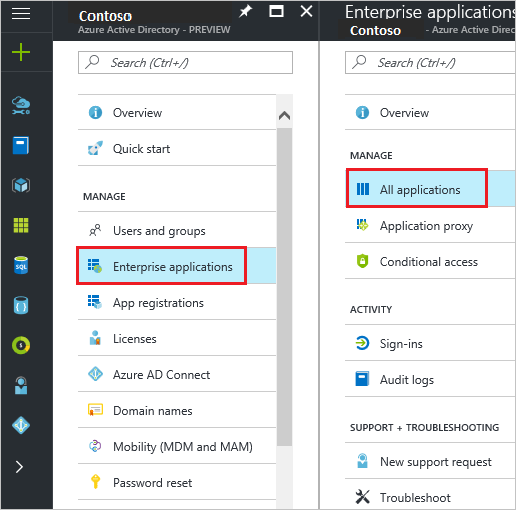
-
To add new application, click New application button on the top of dialog.

-
In the search box, type PurelyHR.

-
In the results panel, select PurelyHR, and then click Add button to add the application.

Configuring and testing Azure AD single sign-on
In this section, you configure and test Azure AD single sign-on with PurelyHR based on a test user called "Britta Simon."
For single sign-on to work, Azure AD needs to know what the counterpart user in PurelyHR is to a user in Azure AD. In other words, a link relationship between an Azure AD user and the related user in PurelyHR needs to be established.
In PurelyHR, assign the value of the user name in Azure AD as the value of the Username to establish the link relationship.
To configure and test Azure AD single sign-on with PurelyHR, you need to complete the following building blocks:
- Configuring Azure AD Single Sign-On - to enable your users to use this feature.
- Creating an Azure AD test user - to test Azure AD single sign-on with Britta Simon.
- Creating a PurelyHR test user - to have a counterpart of Britta Simon in PurelyHR that is linked to the Azure AD representation of user.
- Assigning the Azure AD test user - to enable Britta Simon to use Azure AD single sign-on.
- Testing Single Sign-On - to verify whether the configuration works.
Configuring Azure AD single sign-on
In this section, you enable Azure AD single sign-on in the Azure portal and configure single sign-on in your PurelyHR application.
To configure Azure AD single sign-on with PurelyHR, perform the following steps:
-
In the Azure portal, on the PurelyHR application integration page, click Single sign-on.
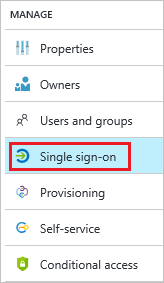
-
On the Single sign-on dialog, select Mode as SAML-based Sign-on to enable single sign-on.

-
On the PurelyHR Domain and URLs section, perform the following steps if you wish to configure the application in IDP initiated mode:

In the Reply URL textbox, type a URL using the following pattern: https://<companyID>.purelyhr.com/sso-consume
-
Check Show advanced URL settings, if you wish to configure the application in SP initiated mode:

In the Sign-on URL textbox, type the value using the following pattern: https://<companyID>.purelyhr.com/sso-initiate

These values are not the real. Update these values with the actual Reply URL and Sign-On URL. Contact PurelyHR Client support team to get these values.
-
On the SAML Signing Certificate section, click Certificate (Base64) and then save the certificate file on your computer.

-
Click Save button.

-
On the PurelyHR Configuration section, click Configure PurelyHR to open Configure sign-on window. Copy the SAML Entity ID and SAML Single Sign-On Service URL from the Quick Reference section.

-
To configure single sign-on on PurelyHR side, login to their website as an administrator.
-
Open the Dashboard from the options in the toolbar and click SSO Settings.
-
Paste the values in the boxes as described below-
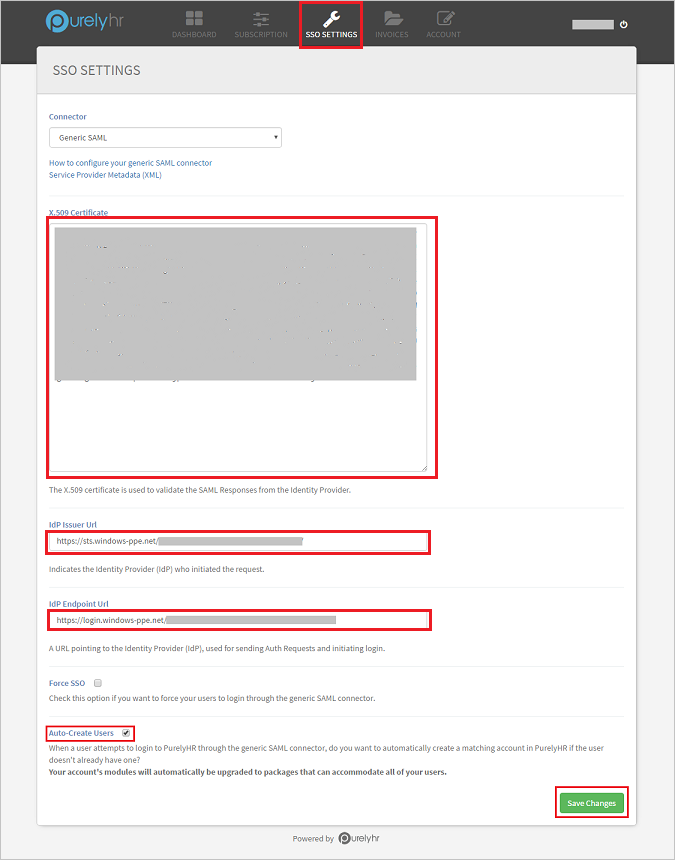
a. Open the Certificate(Bas64) downloaded from the Azure portal in notepad and copy the certificate value. Paste the copied value into the X.509 Certificate box.
b. In the Idp Issuer URL box, paste the SAML Entity ID copied from the Azure portal.
c. In the Idp Endpoint URL box, paste the SAML Single Sign-On Service URL copied from the Azure portal.
d. Check the Auto-Create Users checkbox to enable automatic user provisioning in PurelyHR.
e. Click Save Changes to save the settings.
Tip: You can now read a concise version of these instructions inside the Azure portal, while you are setting up the app! After adding this app from the Active Directory > Enterprise Applications section, simply click the Single Sign-On tab and access the embedded documentation through the Configuration section at the bottom. You can read more about the embedded documentation feature here: Azure AD embedded documentation
Creating an Azure AD test user
The objective of this section is to create a test user in the Azure portal called Britta Simon.

To create a test user in Azure AD, perform the following steps:
-
In the Azure portal, on the left navigation pane, click Azure Active Directory icon.

-
To display the list of users, go to Users and groups and click All users.

-
To open the User dialog, click Add on the top of the dialog.

-
On the User dialog page, perform the following steps:
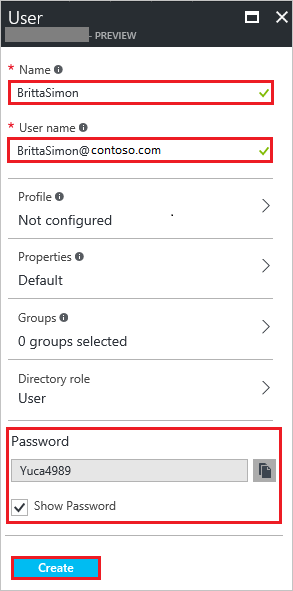
a. In the Name textbox, type BrittaSimon.
b. In the User name textbox, type the email address of BrittaSimon.
c. Select Show Password and write down the value of the Password.
d. Click Create.
Creating a PurelyHR test user
To enable Azure AD users to log in to PurelyHR, they must be provisioned into PurelyHR. In PurelyHR, provisioning is an automatic task and no manual steps are required when automatic user provisioning is enabled.
Assigning the Azure AD test user
In this section, you enable Britta Simon to use Azure single sign-on by granting access to PurelyHR.

To assign Britta Simon to PurelyHR, perform the following steps:
-
In the Azure portal, open the applications view, and then navigate to the directory view and go to Enterprise applications then click All applications.
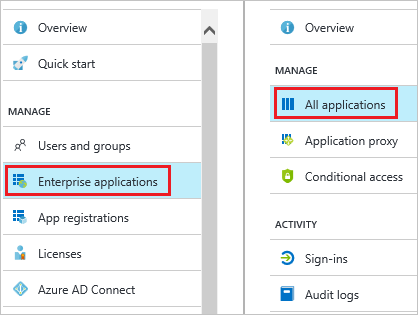
-
In the applications list, select PurelyHR.

-
In the menu on the left, click Users and groups.
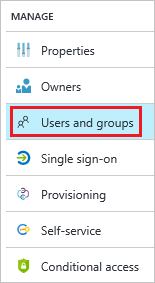
-
Click Add button. Then select Users and groups on Add Assignment dialog.

-
On Users and groups dialog, select Britta Simon in the Users list.
-
Click Select button on Users and groups dialog.
-
Click Assign button on Add Assignment dialog.
Testing single sign-on
In this section, you test your Azure AD single sign-on configuration using the Access Panel.
Click the Absorb LMS tile in the Access Panel, you get automatically signed-on to your Absorb LMS application.
For more information about the Access Panel, see. Introduction to the Access Panel.